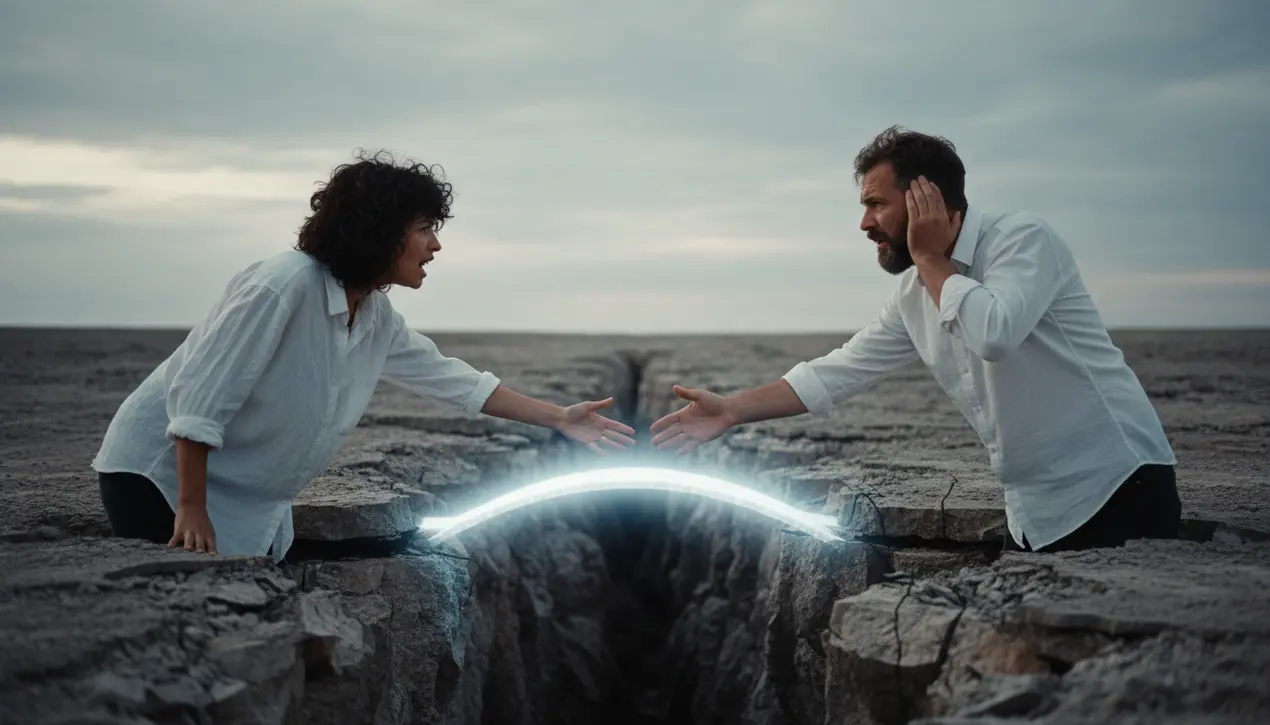
OthereducationEducational Policy
The Art of Bridging the Divide: A Humanist Approach to Communication
LA
Laura Bennett
2 hours ago7 min read2 comments
We've all experienced that initial, thrilling connection—a meeting of minds where the gap between two individuals seems to vanish. For a beautiful moment, you exist on a shared wavelength, feeling deeply understood.Then, the inevitable happens. You find yourselves in the same conversation, yet inhabiting entirely different realities.Suddenly, you're not connecting; you're sparring over whose truth is real. This universal breakdown in communication is a critical juncture, and our response in that moment defines the outcome.In 1951, against the tense backdrop of the Cold War—a period where a single miscommunication could trigger global catastrophe—renowned psychologist Carl R. Rogers presented a revolutionary idea at the Centennial Conference on Communications.His insights, though delivered in an era of geopolitical standoffs, speak directly to the intimate chasms that open in our personal relationships. Rogers proposed a radical, counterintuitive solution: genuine, healing communication requires us to disarm.The path to being understood, he argued, is to first seek to understand. This means practicing active listening—not merely waiting for your turn to speak, but fully absorbing the other person's perspective.It involves the deliberate act of reflecting back what you’ve heard: 'It sounds like you felt hurt when I made that comment. ' This simple step ensures the message received is the message intended.Most importantly, it demands the courage to temporarily step into the other person's world, to see the situation through their eyes without immediate judgment or correction. In my work with couples and colleagues, I consistently witness the same pattern: both individuals are so fervently building their case, like attorneys before a court, that the relationship itself becomes the neglected casualty.One client described a recurring argument with his partner about chores. To him, it was a simple matter of logistics and fairness.Only when he paused his defense and truly listened did he uncover the real issue: his partner felt invisible and unvalued in their relationship. The chore was merely the symptom; the disease was a lack of emotional recognition.This is the essence of Rogers' wisdom. He posited that when a person feels truly heard—when their subjective experience is acknowledged and validated—a powerful shift occurs.Defensiveness recedes. The compulsion to fight for one's own version of the truth loses its urgency.This creates the fertile ground necessary for authentic, collaborative problem-solving. This is not surrender; it is the conscious creation of a shared space of trust from which a new, mutually acceptable reality can emerge.In our increasingly polarized world, where digital echo chambers amplify our convictions and vilify dissent, Rogers' human-centered approach is more than a salve for personal relationships. It is an essential, urgent skill for coexisting—a way to bridge the abyss not with a conqueror's imposing structure, but with a shared, delicate, and beautiful thread of understanding.
#communication
#psychology
#Carl Rogers
#conflict resolution
#relationships
#featured
Stay Informed. Act Smarter.
Get weekly highlights, major headlines, and expert insights — then put your knowledge to work in our live prediction markets.
Related News
Comments
Loading comments...
© 2025 Outpoll Service LTD. All rights reserved.